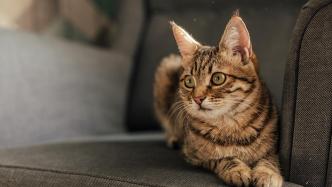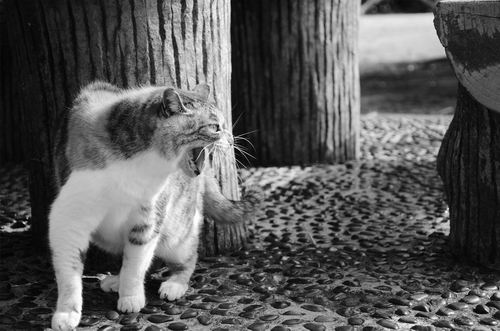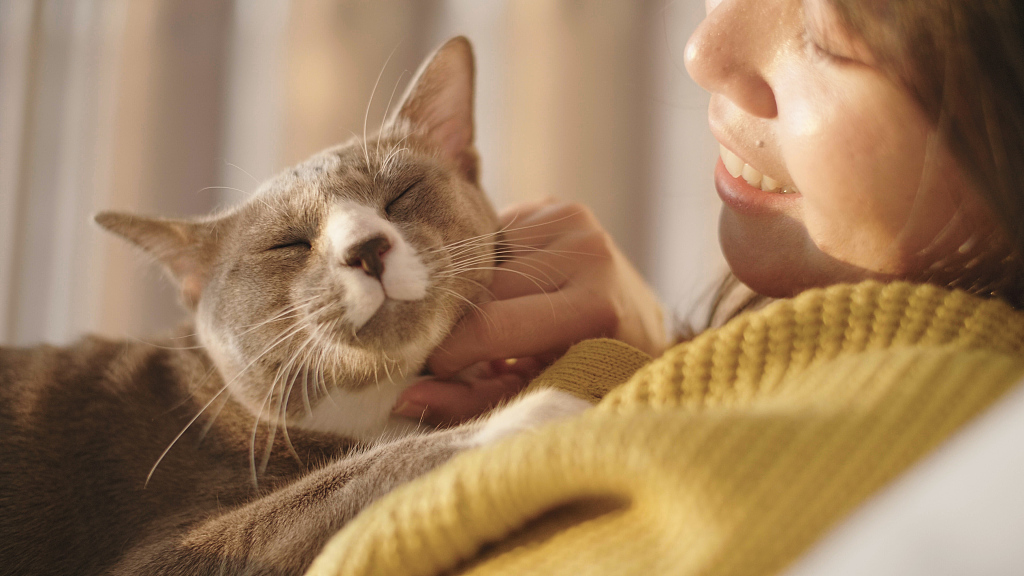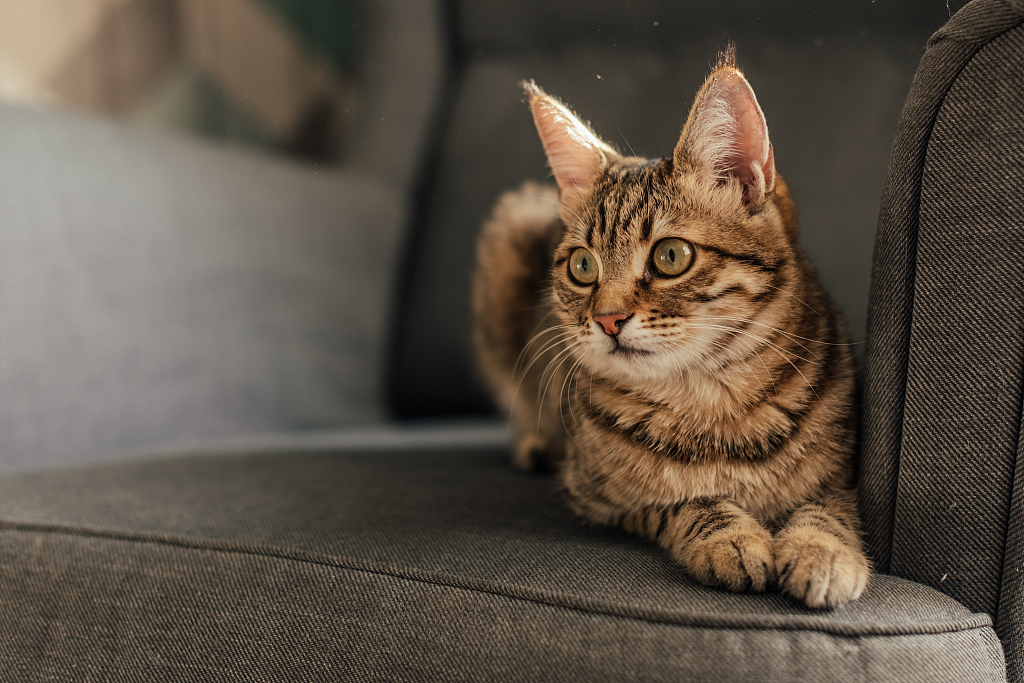

Each cat expression combines four of 26 unique facial movements, such as parting the lips, retracting the jaw, dilating or constricting the pupils, licking the nose, and more. It's unclear what the expressions mean, Florkiewicz said.
When two cats stare at each other with narrowed eyes, occasionally wrinkling their noses and licking their lips, cat lovers know what's coming: a fight.
In a study published Oct. 18 in Behavioral Processes, researchers counted 276 cat expressions, including those used to express kindness, hostility, and everything in between. Researchers found that cats likely evolved a series of sneers, smiles and grimaces during their 10,000 years of living with humans.

"A lot of people think cats are asocial animals, and this study finds that's not the case," said Daniel Mills, a veterinary behaviorist at the University of Lincoln who was not involved in the study.
One of the paper's authors, Lauren Scott of the University of Kansas Medical Center, has always wondered how cats communicate with each other. She recorded 194 minutes of videos of cat expressions in a cat cafe, especially the expressions cats make towards their own kind. She then worked with evolutionary psychologist Brittany Florkiewicz, then at UCLA and now at Lyon College, to code the cats' facial muscle movements.
Researchers found that cats make 276 different facial expressions of their own kind, which is not too different from the 357 expressions that chimpanzees have and far exceeds what many people imagine cats to express. Each cat expression combines four of 26 unique facial movements, such as parting the lips, retracting the jaw, dilating or constricting the pupils, licking the nose, and more.

It's unclear what the expressions mean, Florkiewicz said. But in general, a cat tends to point its ears and whiskers toward another cat when interacting in a friendly manner, and away from its own cat in an unfriendly interaction.
The researchers were unable to compare observations of domestic cats with those of wild cats, but all of the domestic cat's closest relatives are ferocious solitary animals, including its direct ancestor, the African wild cat. Florkiewicz said domestic cats may have retained some of their defensive communication styles and learned friendly facial expressions when waiting for food from humans.
Georgia Mason, a behavioral biologist at the University of Guelph in Canada, said she was very impressed by the new research. She believes this research could be used to design an app that would help cat owners better understand their pets' subtle cues and help create a deep connection between cats and people. (Meng Lingxiao)
Related paper information:
https://doi.org/10.1016/j.beproc.2023.104959